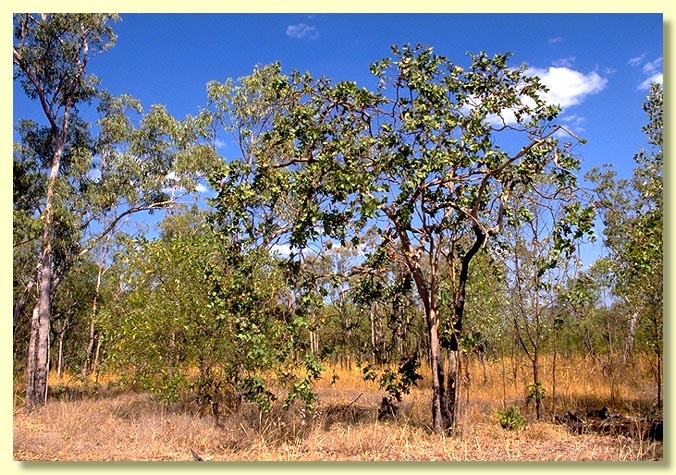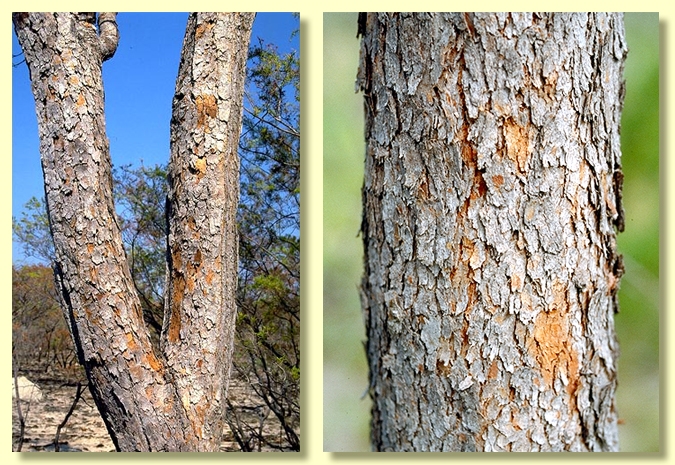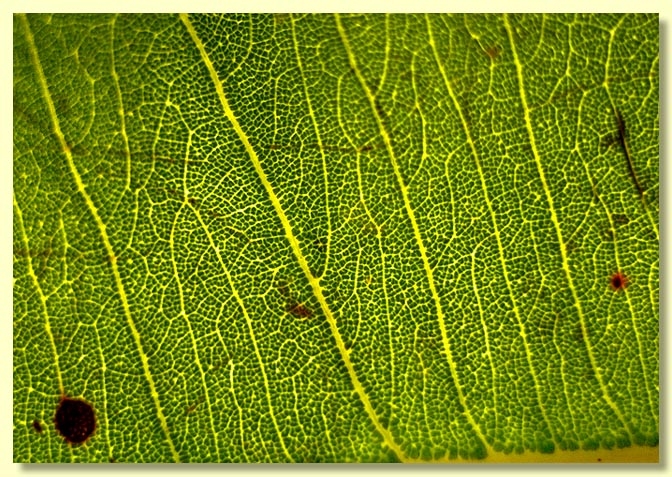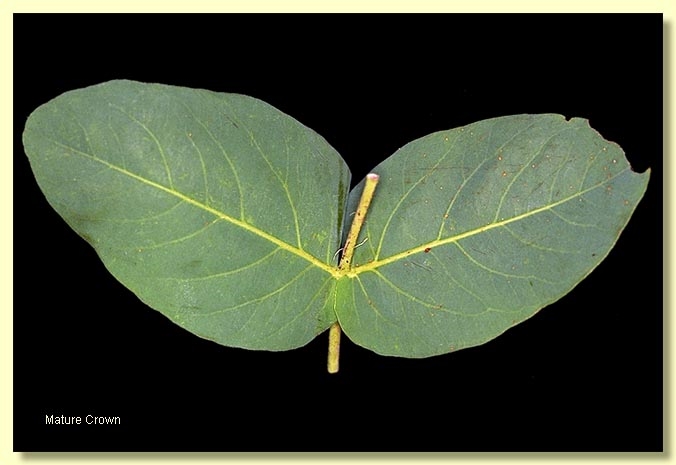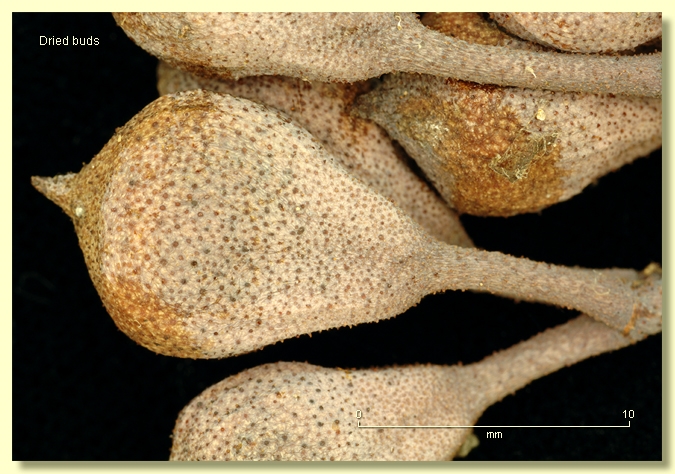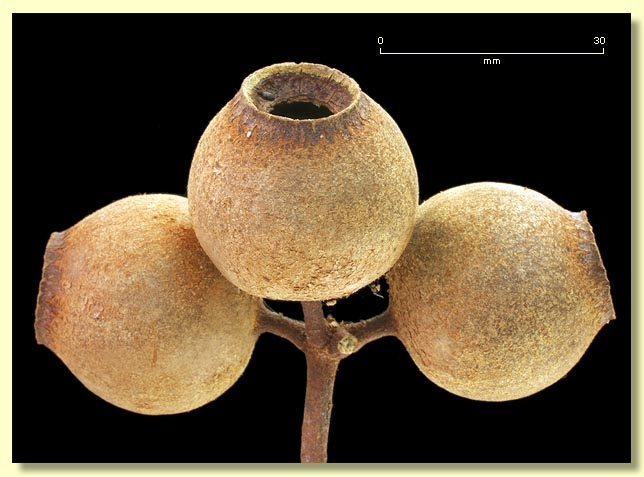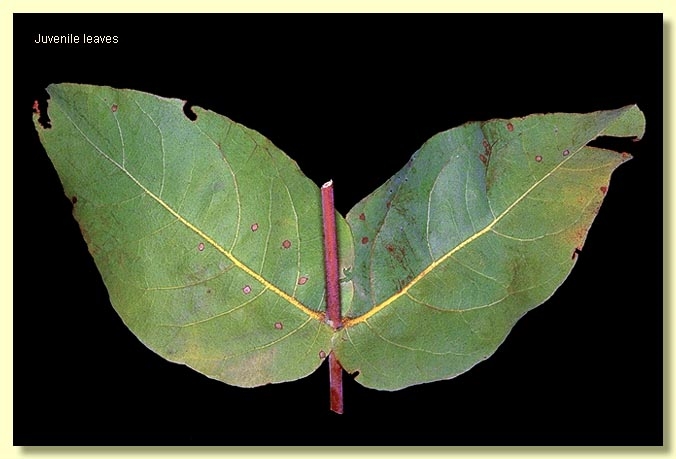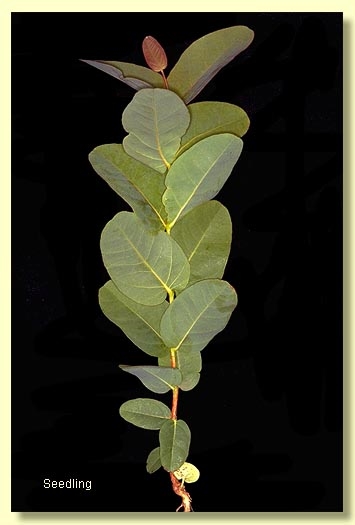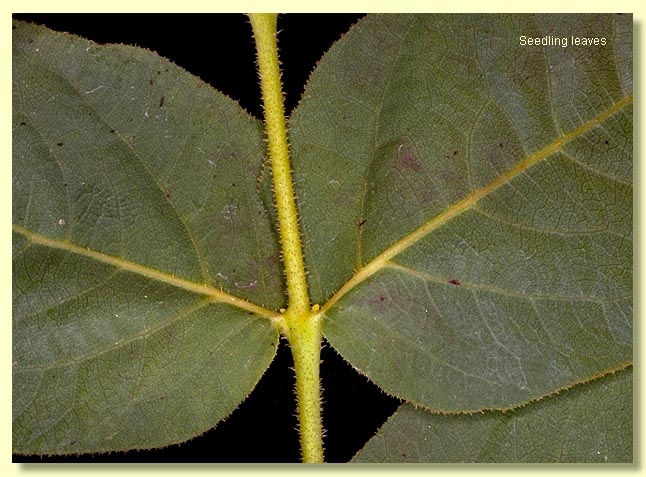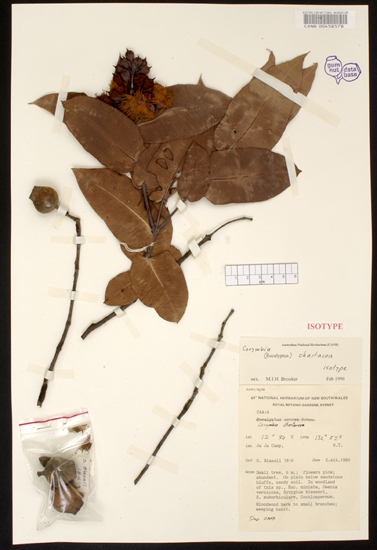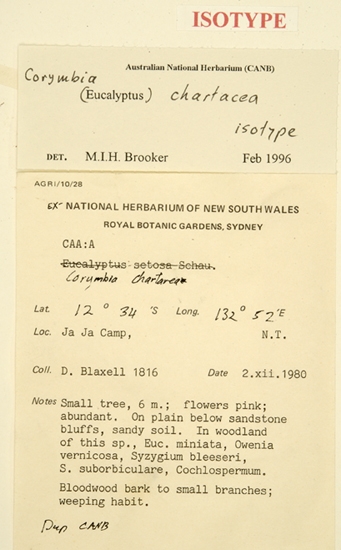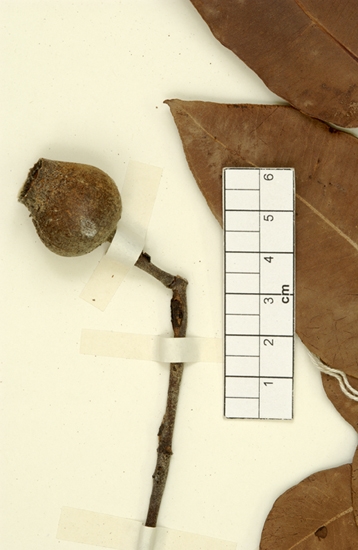Corymbia | Rufaria
Euclid - Online edition
Corymbia chartacea
Corymbia chartacea K.D.Hill & L.A.S.Johnson, Telopea 6: 353 (1995).
Tree 8 m, often with long drooping branches. Forming a lignotuber.
Bark rough to the small branches, thick, tessellated, grey-brown to brown over reddish.
Branchlets lack oil glands in the pith; surface only slightly scabrid with the remains of sparse bristle-glands; glaucous or non-glaucous.
Juvenile growth (coppice or field seedlings to 50 cm): stems rounded in cross-section, slightly scabrid; juvenile leaves sessile, opposite, cordate-ovate, to 12 cm long, to 7 cm wide, smooth to weakly scabrid.
Crown of juvenile leaves, opposite, sessile or on very short petioles (0–0.2 cm); blade cordate to broadly elliptical, (4.5)6–16 cm long, 3–8.6 cm wide, base amplexicaul, margin entire, apex pointed or rounded, concolorous, dull, yellow-green to light green to grey-green, smooth, side-veins at a wide angle to the midrib (penniveined), reticulation very dense, intramarginal vein present, close to the margin, oil glands apparently absent, leaf surface weakly scabrid with remains of bristle-glands (setae) or leaf smooth.
Inflorescence terminal and compound or solitary in upper axils, peduncles rounded or angled, 0.5–2 cm long, buds 3 or 7 per umbel, pedicels up to 1.2 cm long or rarely buds sessile. Mature buds pyriform (1–1.6 cm long, 0.8–1.1 cm wide), glaucous or non-glaucous, moderately setose with bristle-glands, scar absent (both opercula shed together at flowering), operculum beaked, stamens inflexed, all fertile, anthers versatile, dorsifixed, oblong, dehiscing by longitudinal slits, style long and straight, stigma blunt and with a fringe of papillae, locules (3)4, with 5 vertical ovule rows, or the rows indistinct on the placentae. Flowers pink or white.
Fruit pedicellate (pedicels 0–0.9 cm long), urceolate to truncate-globose, with a neck which may be slightly flared outwards at the rim, 2.1–3(3.5) cm long and wide, surface rough, disc descending vertically, valves (3)4, enclosed.
Seeds brown, 10–16 mm long, ellipsoidal with terminal wing, hilum ventral.
Cultivated seedlings (measured at ca node 10): cotyledons large, reniform; stems rounded in cross-section, setose with bristle-glands; leaves sessile or very shortly petiolate (petioles to 0.2 cm), opposite for at least 10 nodes, oblong to elliptical to cordate or almost orbicular, 3.5–9.7 cm long, 2–6.1 cm wide, base rounded to amplexicaul, apex usually rounded, dull, mid-green, ± concolorous, slightly setose on margin and midrib only tending to virtually glabrous by ca node 10 especially on upper side.
Flowering has been recorded in February, May and August.
A small tree with weeping habit, endemic to the Top End of the Northern Territory, where found north-east from Jim Jim and Kapalga to Murgenella, Oenpelli and Maningrida, as a component of savannah woodland on sandy to gravelly soil on flat country. Corymbia chartacea is readily identified by its rough, tessellated bark, crown of large, sessile, opposite, virtually smooth leaves, beaked buds which are shortly setose, white or pink flowers and large urceolate fruit.
C. chartacea is one of a group of northern bloodwood species conspicuous because they have rough bark and opposite ± sessile leaves making up the crown. Within its natural range it is most likely to be confused with C. dunlopiana which also has beaked buds and large fruit but differs in having buds on longer pedicels, red flowers and opposite crown leaves that are rough, i.e. prominently setose to sandpapery. Another species sometimes found near C. chartacea is C. papillosa which also has opposite crown leaves that are setose, smaller buds that are rarely beaked and much smaller fruit (< 1.6 cm wide). A fourth species with opposite setose crown leaves that may also occur in this area is C. ferruginea subsp. ferruginea, which differs from C. chartacea in the rough leaves and the scurfy and shortly setose buds. The setae in C. ferruginea subsp. ferruginea are rusty brown in colour due to the presence of microscopic single cell hairs on the surface giving each seta a "stellate" appearance and the new branchlets and leaves a rusty look. Other species of bloodwood with opposite leaves in the crown occur further to the south.
MORE ABOUT CORYMBIA
MORE ABOUT RED BLOODWOODS
Corymbia chartacea: Latin chartaceus, resembling paper, referring to the texture of the leaves.

